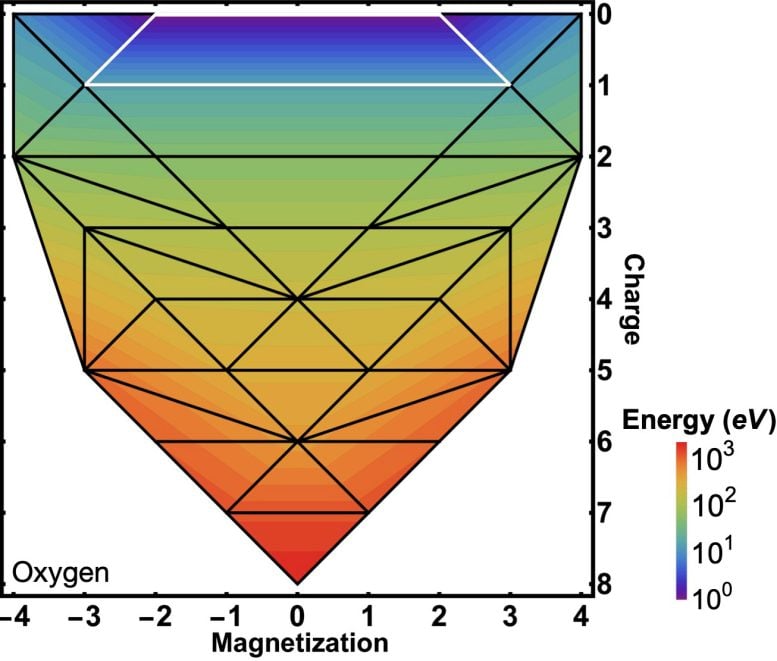
A team of physicists at Trinity College Dublin has developed new quantum mechanics theorems that enhance the understanding of energy landscapes in quantum particles. Their research, aiding more accurate simulations, holds potential for advancing green technology materials.
Physicists at Trinity College Dublin have advanced quantum mechanics, enabling better simulations and potential breakthroughs in green technologies.
Grasping the precise energy landscapes of quantum particles can significantly enhance the accuracy of computer simulations for material sciences. These simulations are instrumental in developing advanced materials for applications in physics, chemistry, and sustainable technologies. The research tackles longstanding questions from the 1980s, paving the way for breakthroughs across various scientific disciplines.
An international group of physicists, led by researchers at Trinity College Dublin, has developed new theorems in quantum mechanics that explain the “energy landscapes” of quantum particle collections. Their work resolves decades-old questions, paving the way for more accurate computer simulations of materials. This advancement could significantly aid scientists in designing materials poised to revolutionize green technologies.
The new theorems have just been published in the prominent journal Physical Review Letters. The results describe how the energy of systems of particles (such as atoms, molecules, and more exotic matter) changes when their magnetism and particle count change. Solving an open problem important to the simulation of matter using computers, this extends a series of landmark works commencing from the early 1980s.
The combined pen-and-paper and computational work was done by Andrew Burgess, PhD Candidate in Trinity’s School of Physics, together with Dr Edward Linscott, from the Paul Scherrer Institute in Switzerland, and Dr David O’Regan, Associate Professor in Physics at Trinity.

An illustration of the exact energy landscape of the oxygen atom, which takes the form of a tiled valley, as described by the quantum mechanical theory. Credit: Dr David O’Regan, Trinity College Dublin.
The Role of Computer Simulations in Material Science
The exploration and understanding of molecules and materials using computer simulation is a mature and thriving research area. It has a long track record of success over several decades, and several materials in current use were developed with the help of such simulations. When studying systems at the atomic level, the equations that describe the particles and their interactions are those of quantum mechanics.
These equations are very demanding, and must be approximated for practical simulations. The art of making such approximations more reliable, while keeping the computational costs manageable, is approaching its 100th year. This work is increasingly guided by the handful of known “exact conditions”, i.e. definite rules from quantum theory, such as those found here.

Dr David O’Regan and Mr Andrew Burgess discuss their work in Trinity College Dublin. Credit: Dr David O’Regan, Trinity College Dublin.
Explaining how to visualize what the team discovered, Dr. David O’Regan says: “Imagine a steep-sided valley, where the ground is not curved but instead made up of angular tiles, like you might see in an old arcade game where the images were made using polygons.
“We have found that the height profile in fractured valleys like this represents the exact energy of isolated collections of particles, like molecules. Heading straight up the valley corresponds to changing the number of electrons that hold together the molecule, while moving to each side increases its magnetism. This work completes the mapping of this valley up to high magnetic states, finding that the valley walls are steep and tilted.”
Insights into Quantum Mechanical Theorems
Andrew Burgess, lead author, describes in more detail how the discovery came about, saying “While working on a different problem, I needed to know the shape of this energy valley for simple systems. Hunting through published research, I could find lots of nice graphs but to my surprise, they stopped short of mapping the entire valley. I realized that existing quantum mechanical theorems could be used for systems with one electron such as the hydrogen atom. However, for systems with two electrons such as the helium atom, these theorems could tell me little about the sides of the valley. Specifically, a quantum mechanical theorem known as the spin constancy condition was incomplete.”
Dr Edward Linscott, from the Laboratory for Materials Simulations at PSI, explains the significance of the team’s findings, adding: “Understanding the geography of this energy landscape may seem quite abstract and esoteric – but actually, this knowledge can help solve all sorts of real-world problems. When colleagues of ours use computer simulations to try to find next-generation materials for more efficient solar panels, or catalysts for more energy-efficient industrial chemistry, our knowledge of the energy landscape can be baked into the calculations that they perform, making their predictions more accurate and reliable.”
Dr O’Regan added: “The energy differences and slopes of this valley landscape underpin the stability of matter, interactions between materials and light, chemical reactions, and magnetic effects. Knowing what the entire valley surface looks like, including at high magnetization, is already helping us to build better tools for simulating complex materials, even when they are not magnetic.
“Motivating this work is the need to provide improved simulation theory and methods for developing materials for renewable energy and chemistry applications. When a battery is discharging, for example, there are metal atoms that change their particle count and magnetism. Here we see that we’re moving in that same valley landscape and it’s the drop in height, so to speak, that gives the energy that the battery provides. This is an example of applied simulation and abstract quantum theory being practiced side by side, each motivating and improving the other.”
Reflecting on the nature of this kind of research, Mr Burgess added: “This interplay between theory and practical simulation is what I love most about this area of research. We have already developed a new method for modeling materials based on these theorems and are testing it out on battery cathode materials, so there is plenty of exciting work in the pipeline!”
Reference: “Tilted-Plane Structure of the Energy of Finite Quantum Systems” by Andrew C. Burgess, Edward Linscott and David D. O’Regan, 12 July 2024, Physical Review Letters.
DOI: 10.1103/PhysRevLett.133.026404
The study was funded by the Irish Research Council and the Swiss National Science Foundation.








Be the first to comment on "Physicists Rewrite Quantum Rules – New Theories Could Revolutionize Materials Science"